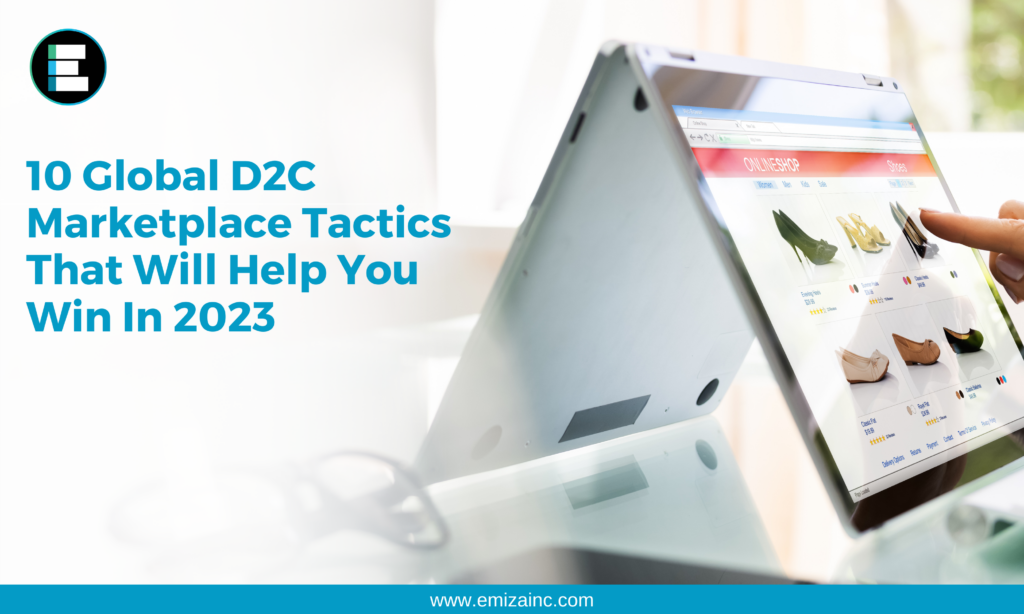Direct-to-consumer (D2C) retail distribution has emerged as a game-changing strategy. With D2C, businesses can sell their products directly to customers, cutting out intermediaries and gaining unprecedented control over production, promotion, and distribution. This approach leverages social media, websites, and advanced technologies to forge a direct connection between brands and consumers. As we step into 2023, let’s delve into ten crucial D2C marketplace tactics that are poised to drive success in the global marketplace.
-
Analyze Budget for the Business’s Marketplace
Starting with a comprehensive financial plan is crucial before embarking on D2C growth. Budget analysis not only aids in resource allocation but also provides insights into cash flow, guiding strategic decisions. Evaluating budget deviations against forecasted demand helps maintain financial stability while identifying growth opportunities.
-
Developing Brand Awareness Through Content Marketing
A strong brand identity is fundamental for D2C success. Crafting a clear brand objective, rooted in understanding your target audience, lays the foundation. Content marketing, integrated into SEO strategies, plays a pivotal role in brand recognition and customer engagement, particularly for brands with limited advertising budgets.
-
Marketing Strategies for Overall Sustainable Growth
Balancing short-term and long-term strategies is crucial for sustainable D2C growth. Leveraging the power of social media, SEO, and direct traffic aids overall customer acquisition. Implementing both short-term techniques like search engine and display ads, and long-term strategies like content-based marketing and SEO, creates a well-rounded growth approach.
-
Short-Term Strategies: Paid Advertising
Short-term strategies like pay-per-click (PPC) ads, Google Shopping ads, and sponsored social media advertising offer quick results and exceptional ROI. These techniques facilitate immediate sales generation, brand recognition, and faster cash flow, making them vital for D2C growth.
-
Long-Term Strategies: SEO and Content Marketing
Long-term strategies such as SEO and content marketing, though slower to yield results, provide sustainable growth and organic traffic. High-quality content creation coupled with SEO optimization can attract a vast audience, enhancing brand visibility, and increasing revenue over time.
-
Assess the Most Significant Demand of Consumers
More than half of customers prefer D2C brands over multi-brand stores, presenting an opportunity for targeted D2C growth. By analyzing customer data and interactions, businesses can understand consumer preferences and tailor their offerings accordingly.
-
Competing Up Against Established Brands
D2C brands can effectively compete against established giants by offering unique value propositions, personalized customer experiences, and streamlined distribution models. The D2C membership model can enhance brand loyalty and customer satisfaction, setting the stage for growth.
-
Advance Your Resources and Investments
Efficient resource allocation and technological advancement are key factors in D2C success. By making strategic investments and adopting innovative resource management techniques, businesses can gain a competitive edge and capture market share.
-
Emphasize On Customer Lifetime Value (CLTV)
Leveraging CLTV not only enhances customer experience but also informs growth strategies. Personalized experiences and exceptional customer service contribute to increased CLTV, fostering brand loyalty and long-term growth.
-
D2C Omnichannel Fulfilment
Omnichannel fulfilment ensures seamless customer experiences across online and offline channels. Recognizing consumer behavior and providing consistent service enhances customer journey continuity and boosts D2C growth.
-
Data Centralization
Centralizing customer data enables personalized experiences across touchpoints. Utilizing Customer Relationship Management (CRM) systems aids in data collection, analysis, and engagement, leading to frictionless customer journeys.
-
Employ Trusted Fulfilment and Shipping Partners
Efficient eCommerce fulfilment solutions, including inventory management and streamlined logistics, are pivotal for D2C growth. Trusted partners ensure timely, cost-effective product delivery, contributing to sustainable growth and customer satisfaction.
Conclusion
As global D2C marketplace dynamics evolve, these tactics can empower businesses to not only survive but thrive in 2023 and beyond. By strategically navigating the realm of D2C, brands can establish themselves as market leaders and create lasting connections with their customers.

